Dressler syndrome: complications after heart damage and what you need to know
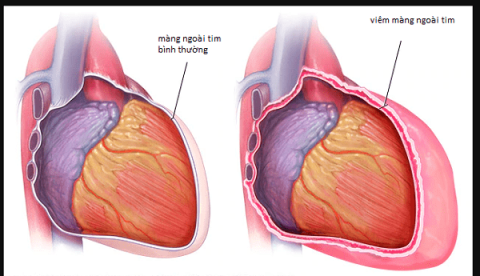
Our heart is enclosed in a sac called the pericardium. The pericardium has both protective and supportive functions in pumping blood. There are many pathologies that occur on the pericardium, the most common being pericarditis.
Pericardial causes are diverse, both primary and secondary. In this article, we will learn about the pathology in which pericarditis is a complication after other diseases: Dressler syndrome. The occurrence of Dressler syndrome further complicates the patient's pathological condition. Therefore, you need to know well to recognize and treat promptly.
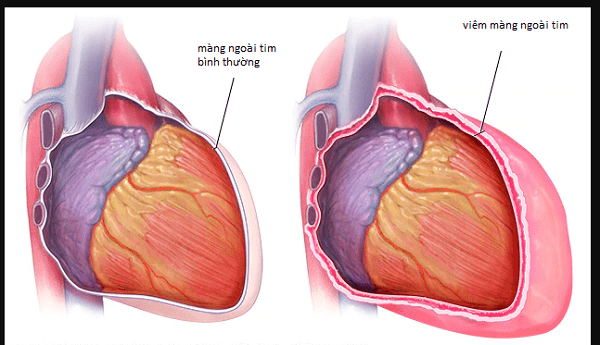
Pericarditis
content
- 1. What is Dressler syndrome?
- 2. Causes of Dressler's Syndrome
- 3. What are the complications of Dressler syndrome?
- 4. What are the symptoms of Dressler syndrome?
- 5. How is Dressler syndrome diagnosed?
- 6. How is Dressler syndrome treated?
- 7. How to prevent Dressler syndrome?
1. What is Dressler syndrome?
- Dressler syndrome is an inflammatory condition of the pericardium secondary to severe heart damage. These lesions often cause myocardial cell necrosis.
- This syndrome, along with a number of other pericardial lesions, is collectively known as postcardiac injury syndrome. Injury to the heart muscle causes tissue destruction. This leads to accumulation of tissue debris and blood in the pericardium. Thereby activating the inflammatory response and local immune response. This is the mechanism underlying the pericarditis in Dressler syndrome. Because it is an autoimmune mechanism, if there is no additional bacterial infection, antibiotic treatment is not required.
- Inflammation also affects other sites, most commonly myocarditis. Serious complications such as heart failure, ventricular arrhythmias, or severe conduction abnormalities are rare. The most serious condition is acute cardiac tamponade due to pericardial effusion which can be life-threatening. In addition, the disease also increases the length of hospital stay, thereby increasing the risk of hospital-acquired infections.
2. Causes of Dressler's Syndrome
- The pathogenesis of the syndrome has not been clearly studied. However, it is basically the body's autoimmune response that triggers an inflammatory response. That is, the body fights against its own organs. Depending on the individual, increased susceptibility results in the release of autoantigens produced by necrotic cardiomyocytes, thereby initiating immune system responses.
- The causes of Dressler syndrome are primarily myocardial cell necrosis. Dead cells trigger an immune response. This results in the production of autoimmune antibodies. Possible causes are:
- Myocardial infarction : The most common cause. Myocardial infarction without timely intervention in the golden period will destroy the myocardium.
- Heart surgery: During surgery can cause micro-trauma on the heart. They damage heart muscle cells.
- Heart transplant: Rejection is a very common problem after an organ transplant. Autoimmune mechanism against the transplanted heart causes pericarditis.
- Cardiac trauma : Direct trauma to the heart such as beating, cutting, stabbing.. causing death of heart muscle cells
- Cardiac arrest : When the heart stops beating, leaving itself without blood supply. This causes myocardial cell death.
- In addition, although rare, cardiac procedures can also cause Dressler syndrome. For example, after coronary intervention, pacemaker placement...
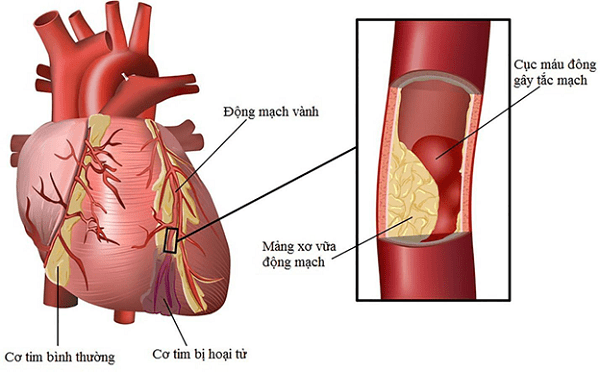
Myocardial infarction is a common cause
3. What are the complications of Dressler syndrome?
If left untreated, Dressler syndrome can lead to serious complications. Common complications are:
- Acute cardiac tamponade : Inflammation causes increased secretion of fluid into the pericardium. Because the pericardium is a closed cavity, this fluid will press on the heart. Thereby increasing the pressure in the pericardial cavity, preventing the contraction of the heart. This prevents it from pumping enough blood to the rest of the body. The consequences can lead to organ failure, shock and even death.
- Constrictive pericarditis: Recurrent or chronic inflammation can cause the pericardium to thicken or scar, leading to the pericardium gradually shrinking, tightening the heart, reducing the heart's ability to pump blood efficiently. This is a serious complication that may require removal of the pericardium.
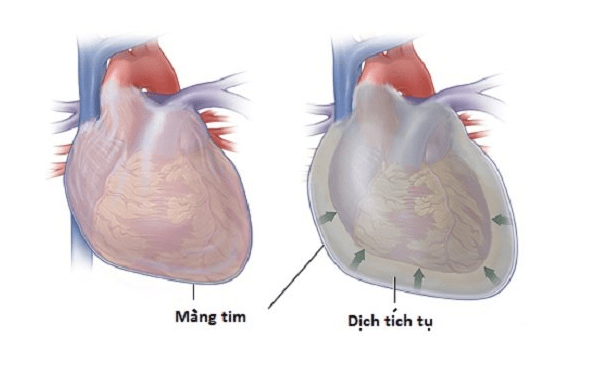
The effusion causes compression of the heart
4. What are the symptoms of Dressler syndrome?
The first symptoms of a heart attack may appear two weeks to one month after a heart attack. Nonspecific signs may be:
- Patient feels tired and weak
- High fever: Fever can reach 39-40 degrees intermittently or continuously, which can be reduced after attacks.
- Chest pain: Severe pain, feeling of heaviness, lasting for hours, pain increasing when lying on the back, decreasing when sitting or bending forward, pleuritic chest pain (increased with deep inhalation, after coughing and swallowing). Pain is felt from the top of the trapezius, neck, arms, and back.
- A common symptom of Dressler's syndrome is pericardial fluid. The pericardial rub is a distinctive feature to confirm the diagnosis of pericarditis. However, this symptom soon disappeared. Not all patients with pericarditis have a pericardial rub. The amount of pericardial fluid also affects the pericardial rub.
- Dry cough, shortness of breath, coughing up blood.
- Skin irritation – rash
5. How is Dressler syndrome diagnosed?
Diagnosis of Dressler syndrome requires a combination of clinical and laboratory findings. The clinician should carefully examine the patient's symptoms. Ask about a history of heart disease, heart surgery. Depending on the condition of each patient, the doctor will appoint the following paraclinical:
- Echocardiography: Investigate pericardial effusion, pericardial properties. In addition, the complications of myocardial infarction were also investigated. In the trauma context, mechanical complications of the heart were also detected.
- Electrocardiogram : Manifestations of pericarditis manifest indirectly on the electrocardiogram. Although the specificity is not high, it contributes significantly to suggest the pathology. Electrocardiographic signs can appear very early to help doctors make a timely diagnosis. However, the electrocardiogram is still not valid for the diagnosis of Dressler syndrome
- Chest X- ray : Helps detect pericardial effusion and pleural effusion. It also helps to rule out other conditions similar to pneumonia. X-rays are of great value in cases of trauma or penetrating wounds to the chest. Helps to quickly and initially assess the lesions of the thoracic cavity.
- Blood tests : Elevated blood count and inflammatory factors suggest inflammation.
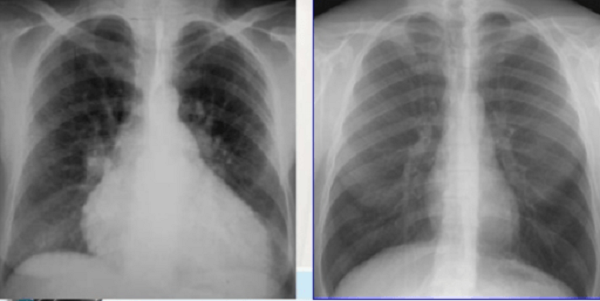
X-ray of the heart before and after the effusion
Dressler syndrome is a moderate or late complication of cardiac lesions. If not treated in time, it will adversely affect the prognosis of the disease.
6. How is Dressler syndrome treated?
BASIC TREATMENT
The goal is to relieve pain and reduce inflammation. The basis of medical treatment for Dressler syndrome is anti-inflammatory drugs, such as:
- Optimal choice in pericarditis after myocardial infarction. This drug has both a therapeutic role in myocardial infarction and has anti-inflammatory properties.
- Nonsteroidal anti-inflammatory drugs/NSAIDs ( Ibuprofen or Naproxen/Naprosyn), and Acetaminophen (Tylenol) help reduce inflammation or pain.
- Colchicine is appropriate in chronic or recurrent pericarditis if aspirin monotherapy is ineffective. Some research suggests that colchicine taken before heart surgery may help prevent syndrome after heart surgery. The efficacy of colchicine in the treatment of post-traumatic cardiac syndrome is unclear.
- This immunosuppressant may reduce the inflammation associated with Dressler syndrome. Corticosteroids can have serious side effects and can affect the healing of damaged heart tissue after an MI or surgery. Therefore, corticosteroids are usually used only when other treatments have not been effective.
TREATMENT OF Complications
Complications of Dressler syndrome are often less responsive to medical treatment. They require more intensive interventions.
- Pericardial puncture: If there is acute tamponade syndrome, the indication for puncture is mandatory. The patient is given local anesthesia and a needle is inserted through the skin to the pericardial cavity. Pericardial puncture is a difficult procedure that requires an experienced doctor. The aspirated fluid can also be tested for differential diagnosis of other diseases.
- Pericardectomy : If the pericardium becomes inflamed, it constricts and blocks the heart, it may need to be removed. This surgery has many potential complications due to the proximity of many organs in the chest. Need a skilled surgical team and experienced surgeons to perform.
- In addition, it is also necessary to treat the cause of Dressler syndrome such as myocardial infarction, trauma, heart injury ...
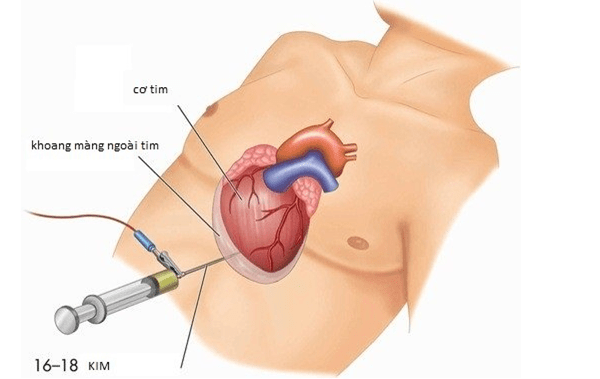
Pericardial puncture
The prognosis for Dressler syndrome is generally favorable. But it depends on how quickly the condition is diagnosed and treated. Although rare, long-term monitoring is recommended because of the risk of complications, such as cardiac tamponade, which can be fatal. A person who has had one episode of Dressler syndrome has a higher risk of having another episode.
7. How to prevent Dressler syndrome?
- Good treatment of underlying diseases such as cardiovascular disease, diabetes, dyslipidemia. Follow the doctor's treatment, do not quit or self-medicate.
- No smoking
- Do not abuse alcohol, stimulants
- Engage in moderate physical activity
- Eat fresh fruits and vegetables, juices, juices, cereals. Replace animal fats with vegetable oils. Limit carbonated, salted, fried, spicy drinks.
Dressler syndrome is a complication after damage to the heart from various causes. The disease can progress slowly, but when complications occur, there is a high risk of death. Dressler syndrome further complicates the patient's medical condition. However, with timely intervention, Dressler syndrome usually has a good prognosis. The most important thing is to treat the etiology well and control complications. Lifestyle control and optimized treatment of the underlying disease are ways to prevent Dressler syndrome.
Doctor Luong Sy North